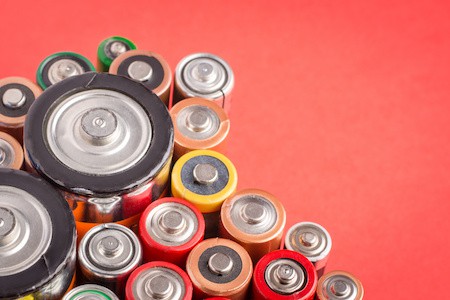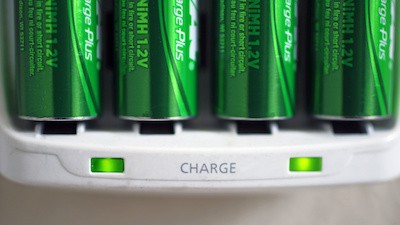One of the biggest challenges with renewable energy generation is that fact that energy production is intermittent. The wind doesn’t always blow, and the sun goes down every night.

To address this, some homeowners simply utilize power from the grid when their renewable energy source is not producing power. Others seek to always utilize renewable energy and employ alternative techniques to ensure they never have to rely on grid power that is generated at least partially using fossil fuels. The most common technique of doing this is through the use of a battery types. While many only think of electric vehicles battery usage or cell phone batteries, many homes have the capacity to run exclusively on a battery source as well. This way, when the battery will discharge lighting can be run without drawing power from the grid.
Two of the most common types of agm batteries solar models are lead-acid and lithium iron phosphate batteries. Each of these have some positive and negative aspects which must be fully considered before making the choice of which battery charger bank to implement.
So, what are the major differences to consider when choosing the best battery charger to pair with your solar system?
-
The Cost Of The Batteries
-
Ability To Be Fully Discharged
-
Environmental Friendliness
-
Difference In Ability To Maintain Voltage
-
The Weight Of The Batteries
-
Total Number Of Cycles In A Single Battery Lifetime
-
Total Efficiency
The Cost Of The Batteries
As with all energy related projects, the cost of a battery storage system can make or break whether or not a system concept becomes a reality. Although the benefits of energy storage is well known, many pass up this opportunity in lieu of lower overall project costs. When comparing the two most common types of battery configurations, lead-acid batteries are considered to be the cheapest upfront cost. The cost of lithium for lithium-ion batteries is far higher than the raw material price of lead for lead-acid batteries.

It is important to note, however, that although the up front cost of these batteries is lower than for their lithium-ion counterpart, the long term usable life and maintenance bills may amount to a higher overall lifetime cost of energy density batteries. But, if a homeowner is seeking to minimize their up front cost by any means necessary and is okay with dealing with additional future maintenance, lead-acid batteries are the cheaper option.
Ability To Be Fully Discharged
Fully discharging a battery means that you are able to extract all of the stored power out of it. Unfortunately, not all batteries are created equal in regards to discharge capabilities. For example, lead-acid batteries are only able to discharge to about 80% before they begin to become seriously damaged. This means you will often have to oversize your battery storage system to accommodate for the fact that you will never be able to fully discharge the battery. When looking at lithium-ion batteries, these systems are able to be fully charges and recharged over and over again with no noticeable harm to the battery. For example, a phone charger is able to again fully recharge lithium iron phosphate batteries even once a phone has completely died. A phone charger could never do this if lead-acid batteries energy storage had been completely discharged.
Environmental Friendliness
Although batteries are one of the biggest helpers of allowing homeowners to utilize exclusively renewable energy throughout their homes, certain aspects, such as their construction and disposal can put somewhat of a strain on the environment.

The main reason for this is because many heavy metals are utilized in battery creation and the process to extract these heavy metal raw materials can be quite dirty. When comparing the two head to head, the environmental impact of extracting lead for lead-acid batteries is far harsher than the process of extracting lithium for lithium-ion batteries. Additionally, the disposal process for lithium-ion batteries is also far cleaners than the disposal process of lead-acid batteries. Although both of these options are still far cleaner than utilizing electricity generated using exclusively fossil fuel fired power plants, it is still important to make an environmentally informed decision when selecting the proper battery for your home.
Difference In Ability To Maintain Voltage
Although it is not imperative to the proper operation of a battery, maintaining a constant voltage over time can be an innate benefit over batteries that fluctuate in their operating voltage over time. When comparing these two types of home batteries, the edge certainly goes to lithium-ion. Lithium-ion batteries are able to maintain a relatively constant operating voltage no matter at what point in the discharge cycle or lifespan of the battery you find your system in. Lead-acid batteries, however, are known to decrease in voltage both at the end of a discharge cycle and as the usable lifespan of the battery itself is reaching its end. While homeowners are still able to store electricity generated by a localized solar system in either of these battery configurations, if they are looking for constant voltage at all times, they may want to lean more in the direction of a lithium-ion battery.
The Weight Of The Batteries
While the weight of batteries may not be the first thought for many seeking to use them, it can be a very limiting factor in cases where batteries must be frequently moved. Cases such as this include, but are not limited to, battery pack 24v banks in an RV for living off the grid and mobile power storage for camping. Lead is a much heavier element than lithium when comparing similar volumes which also translates to batteries lead-acid being far heavier than a rechargeable battery lithium makeup when comparing similar energy density batteries. When looking at an RV, if a battery pack 24v bank is too heavy, it can greatly reduce the fuel efficiency of the vehicle because it will need to move much more weight. This can quickly translate into higher fuel costs over time for the consumer. So, if minimizing the weight of your battery bank is the top priority, the edge must be given to lithium-ion batteries.
Total Number Of Cycles In A Single Battery Lifetime
A single cycle in the world of batteries is considered to be the process of fully charging a battery and then discharging it down to a safe level. The number of useful cycles that a battery can charge and endure is often tied to its life expectancy. When looking at these two kinds of batteries, the edge is once again given to lithium-ion over lead acid.

Typically, a rechargeable battery lithium structure is able to cycle more than 800 times while typically lead acid batteries can only fully cycle up to 300 times before their respective usable lives are over. So, while the up front cost of batteries lead-acid may be cheaper, lithium-ion batteries energy storage systems will achieve more than double the total number of useful cycles. AGM batteries solar are often rated on total lifetime cycles as a base comparison.
Total Efficiency
Perhaps the most important aspect for many homeowners seeking to implement a new battery storage system with their home solar array is the total efficiency. This measure takes into account the total amount of electrical loss that occurs when charging and discharging a battery. In this regard, lithium-ion batteries are far more efficient. Because of their chemical makeup, lead-acid experience far more electrical losses both when charging and discharging. Ultimately, this leads to less renewable energy reaching your home when it is called upon.
While every home solar system is different, it is important to have all the facts before spending your hard earned dollars on any battery charger bank. Whether you’re trying to use these batteries to discharge lighting electricity or for a solar generator to run your entire home, there are many aspects to consider. While many industry professionals are beginning to standardize on lithium ion batteries such as an electric vehicles battery or cell phone batteries, lead acid batteries still play a very large roll in the world around us. The key is to carefully consider your specific set of constraints and make the decision for the best battery charger that matches your battery voltage needs.